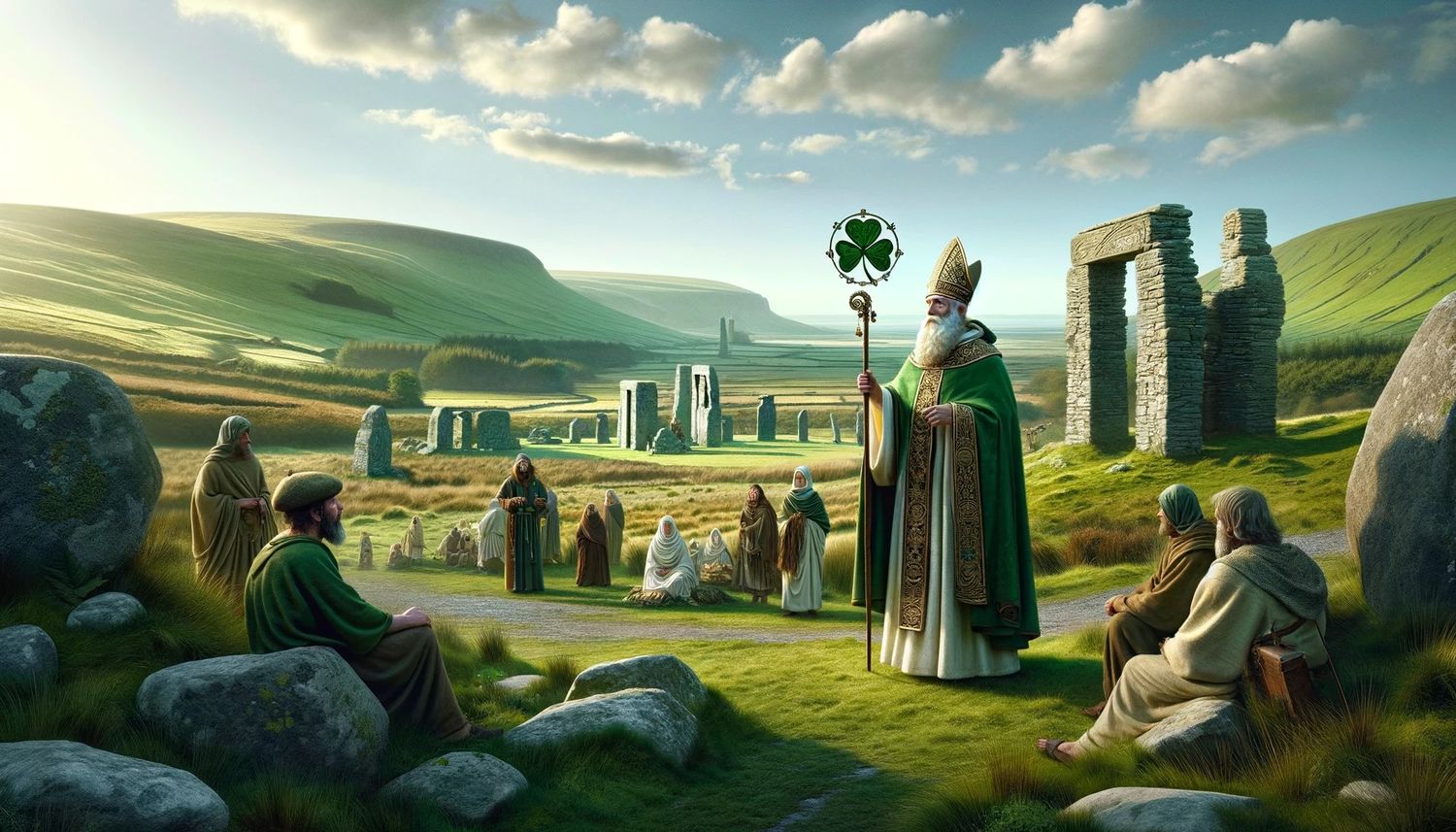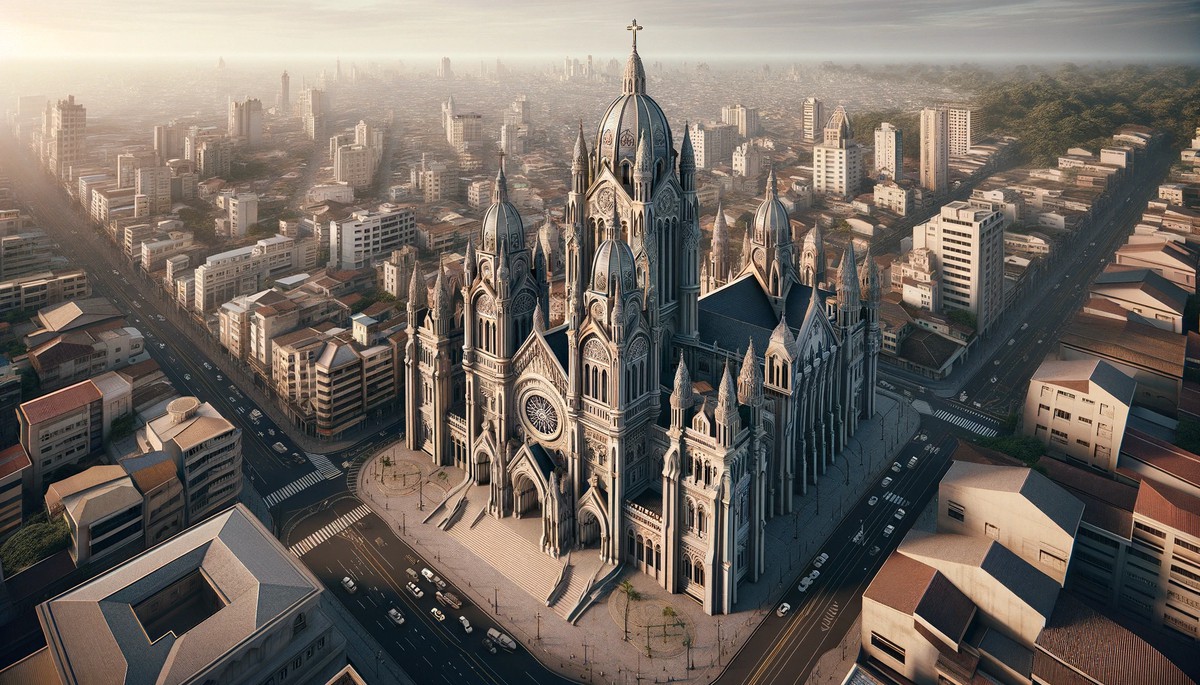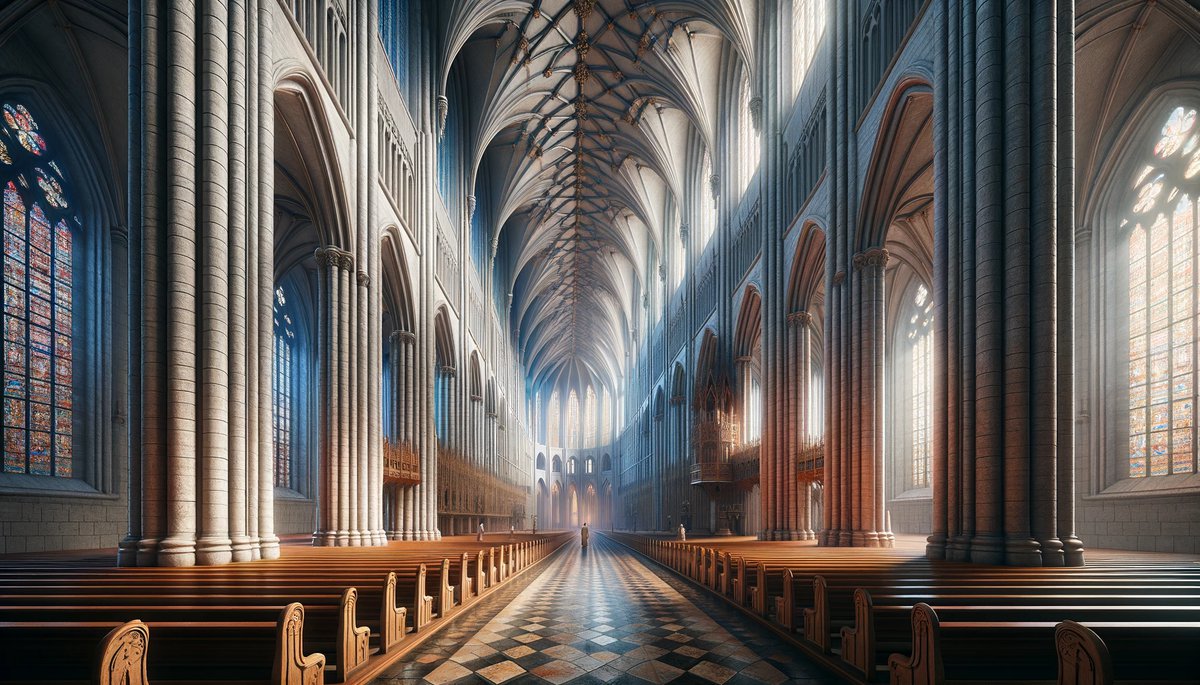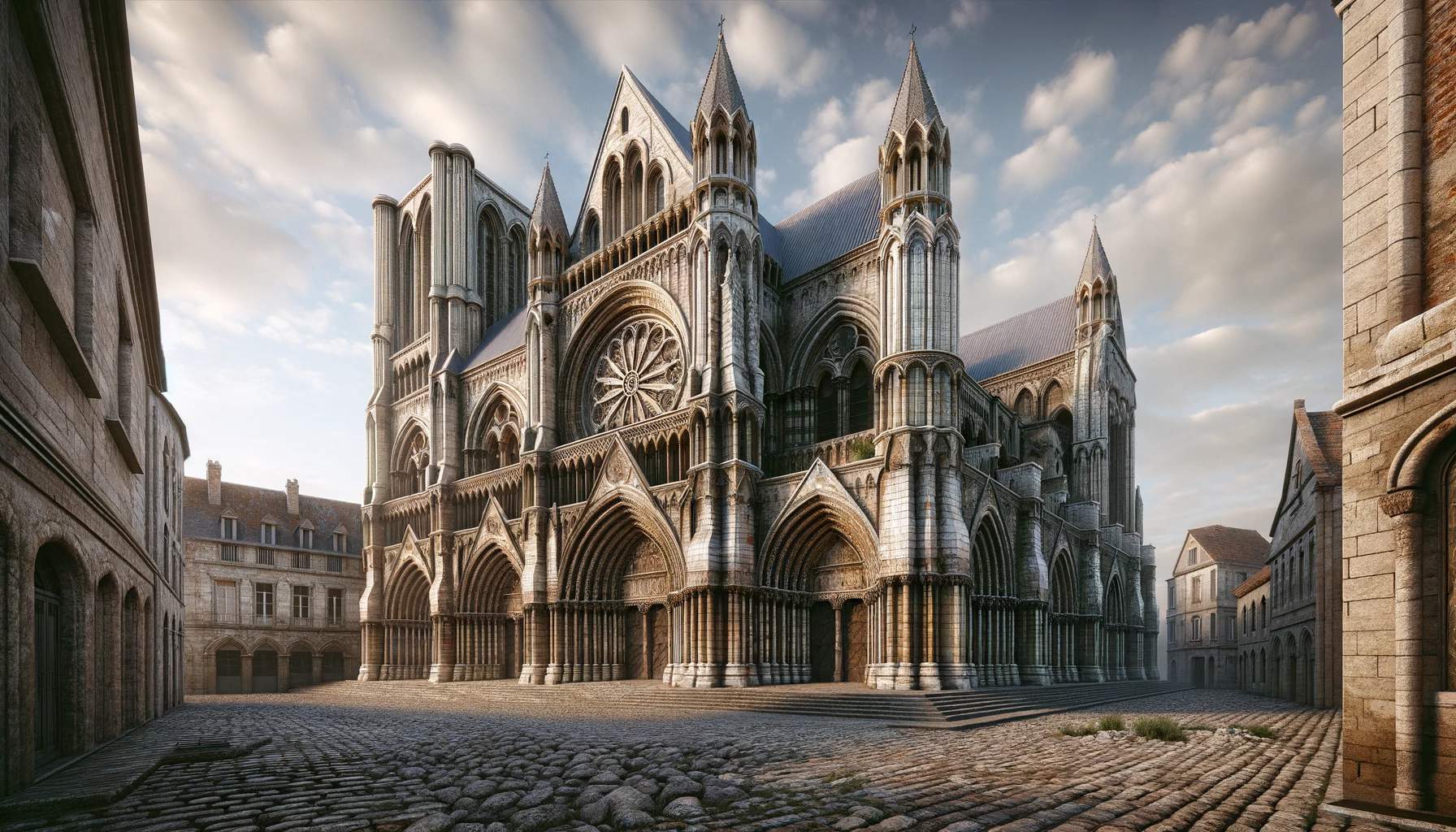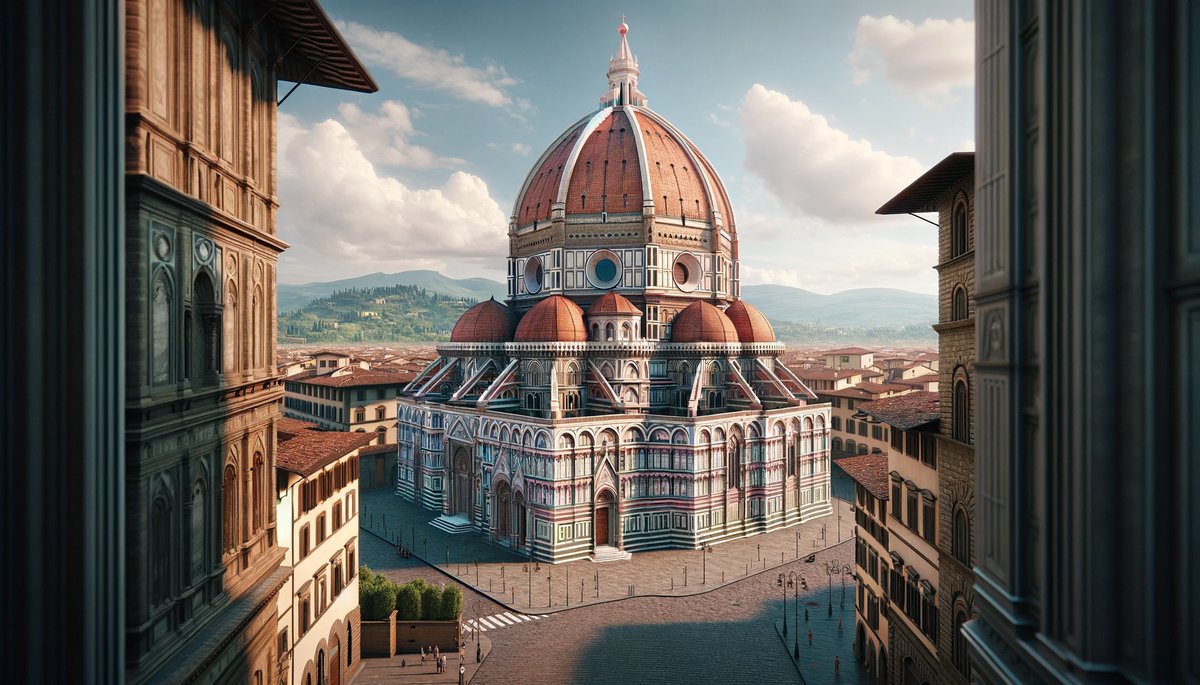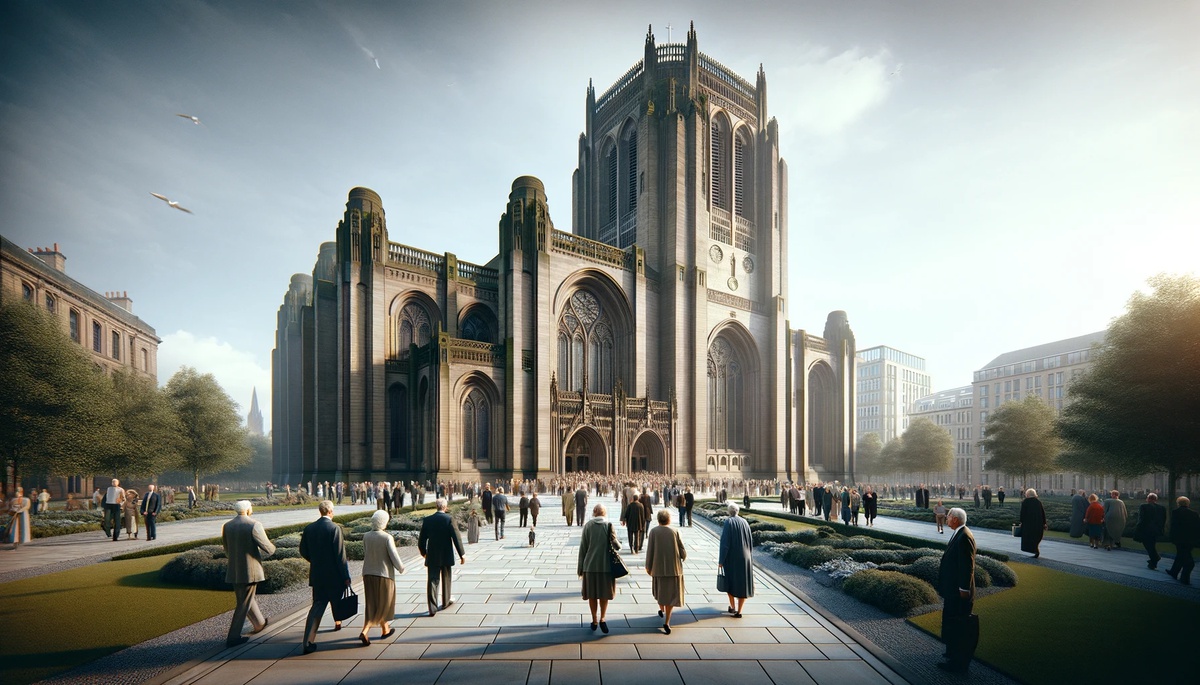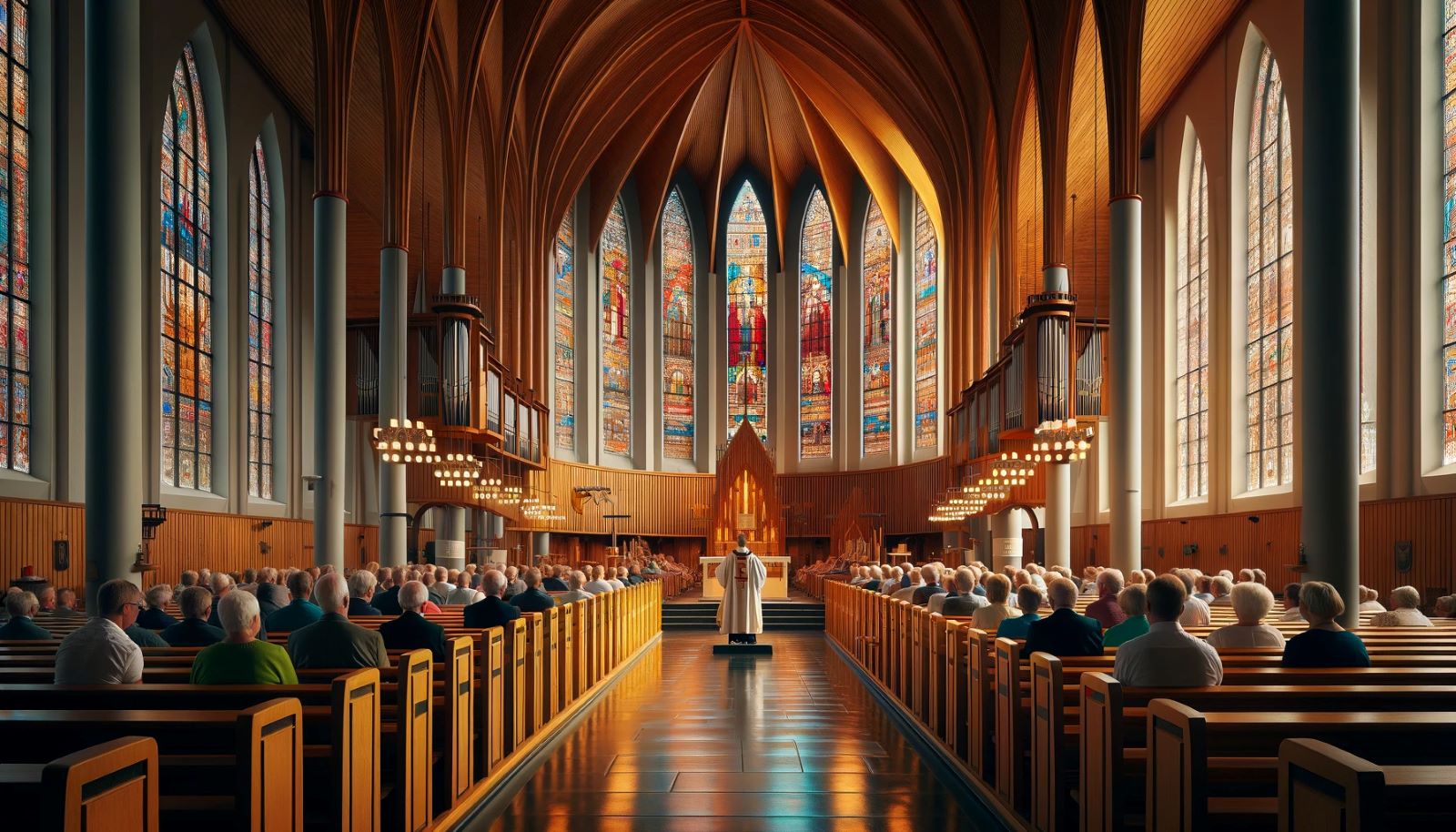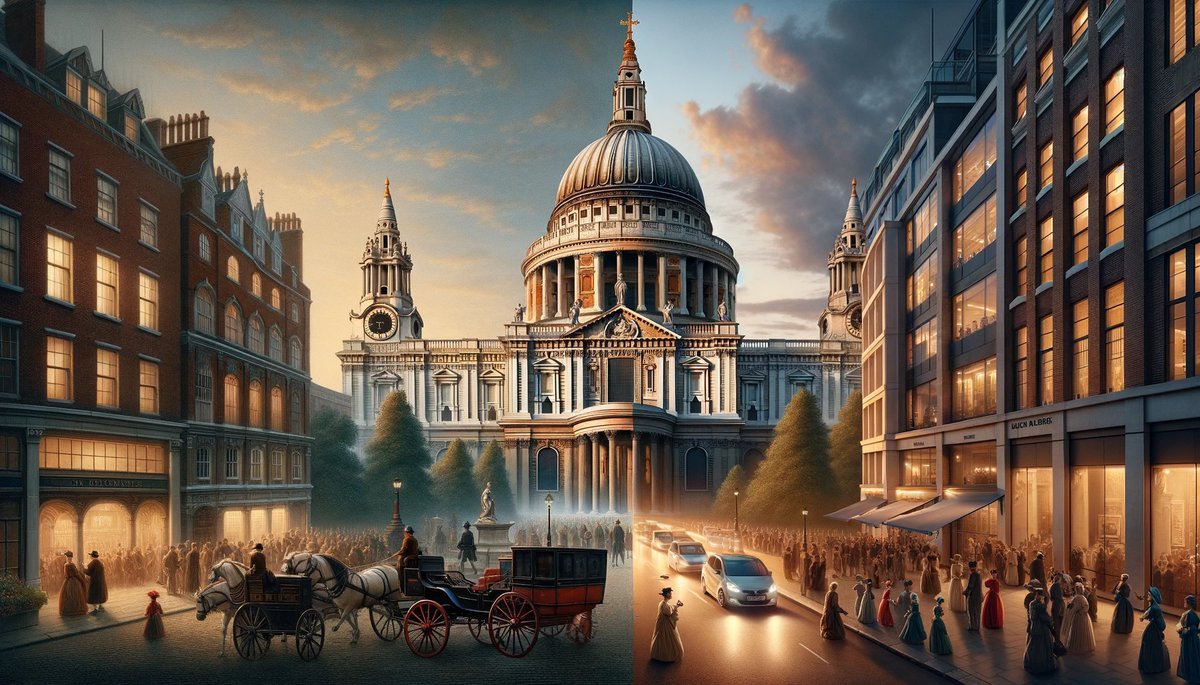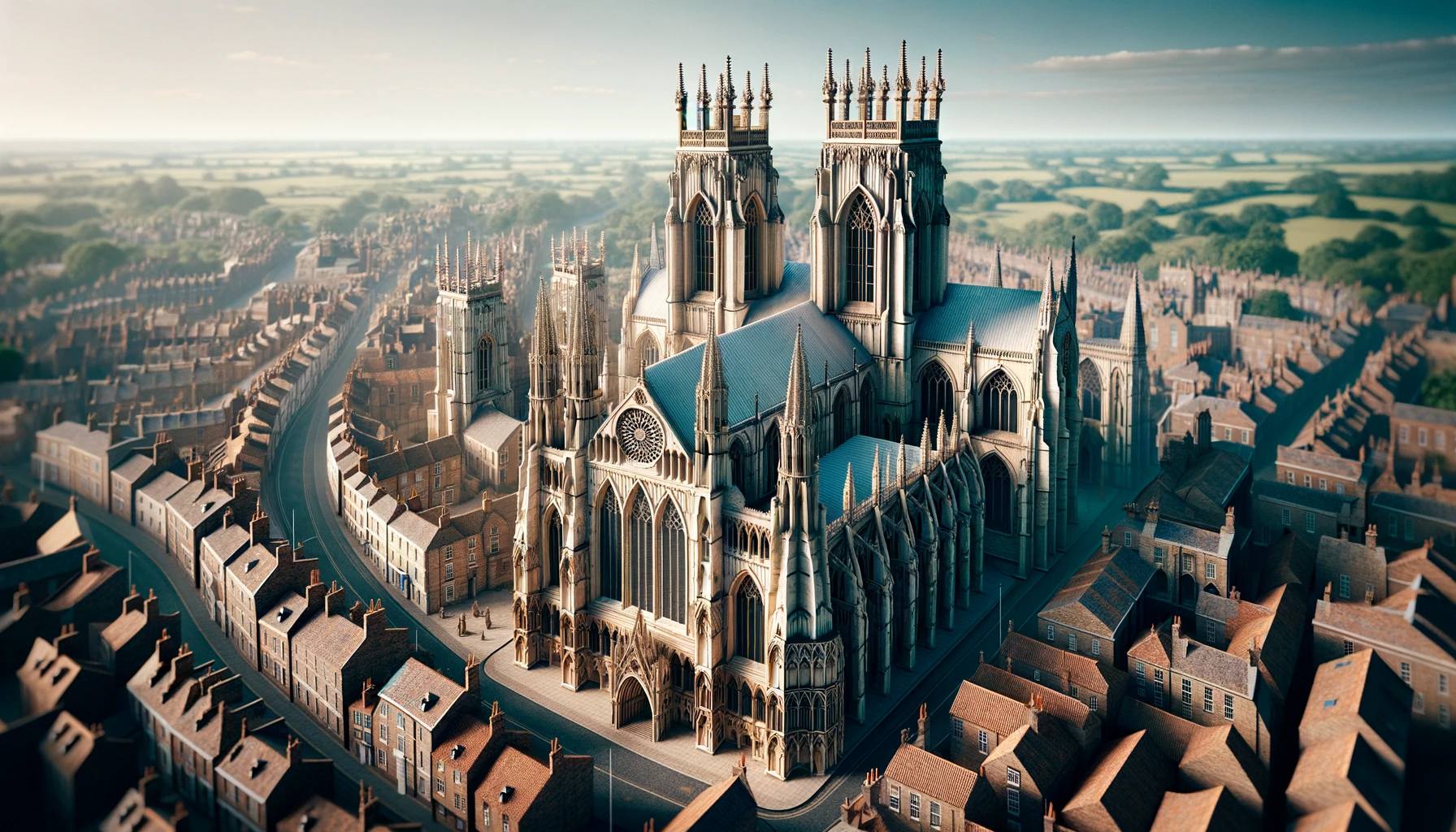Home>Arts and Culture>What Is The Biggest Cathedral In Europe


Arts and Culture
What Is The Biggest Cathedral In Europe
Published: February 17, 2024
Jason DeRose, Managing Editor at Christian.net, uses his expertise in religion and journalism to deepen understanding of faith's societal impacts. His editorial leadership, coupled with a strong academic background, enriches the platform’s diverse content, earning him recognition in both journalism and religious circles.
Discover the largest cathedral in Europe and explore its rich history and stunning architecture. Uncover the artistic and cultural significance of this iconic landmark.
(Many of the links in this article redirect to a specific reviewed product. Your purchase of these products through affiliate links helps to generate commission for Christian.net, at no extra cost. Learn more)
Table of Contents
Introduction
When one thinks of Europe, a myriad of images may come to mind – from its rich history and diverse cultures to its breathtaking architecture. Among the architectural wonders that dot the European landscape, cathedrals stand out as timeless symbols of grandeur and spiritual devotion. These magnificent structures have not only shaped the skylines of European cities but have also played a pivotal role in the continent's history and cultural identity.
Cathedrals are not merely buildings; they are living testaments to the ingenuity, craftsmanship, and unwavering faith of the people who built them. Each cathedral tells a story, not only through its soaring spires and intricate carvings but also through the events and individuals it has witnessed over the centuries.
In this article, we will embark on a captivating journey through the annals of European history and architecture to explore the grandeur and significance of these awe-inspiring edifices. We will delve into the history of European cathedrals, unravel the criteria for determining the biggest cathedral, and ultimately unveil the largest cathedral in Europe. Moreover, we will unravel the architectural features that make these cathedrals marvels of human achievement and examine their enduring importance in shaping the cultural and spiritual landscape of Europe.
Join us as we unravel the mysteries and marvels of European cathedrals, and discover the profound impact they have had on the continent and its people.
Read more: What Is The Biggest Cathedral In The UK
History of European Cathedrals
The history of European cathedrals is a tapestry woven with threads of faith, innovation, and cultural evolution. It traces back to the early centuries of Christianity when the Roman Empire embraced the new religion, leading to the construction of basilicas and early Christian churches. These early structures laid the foundation for the development of cathedrals as Christianity spread across Europe.
During the medieval period, cathedral construction flourished, becoming a focal point of architectural and artistic achievement. The Romanesque style, characterized by thick walls, rounded arches, and sturdy pillars, dominated cathedral design in the 11th and 12th centuries. This architectural style reflected the influence of Roman engineering and the desire to create monumental structures that embodied the power and glory of God.
The Gothic era ushered in a new chapter in cathedral construction, marked by soaring spires, pointed arches, and expansive stained glass windows. The development of flying buttresses allowed for taller and more intricate designs, culminating in the construction of iconic cathedrals such as Notre-Dame de Paris and Chartres Cathedral. These Gothic masterpieces not only showcased the technical prowess of medieval builders but also served as expressions of spiritual devotion and communal pride.
The Renaissance period witnessed a shift in architectural styles, with a renewed focus on classical elements and harmonious proportions. This era saw the construction of cathedrals that blended Gothic and Renaissance influences, such as the Milan Cathedral, which features elaborate spires and ornate facades adorned with statues and reliefs.
The Baroque and Rococo periods brought further innovation to cathedral design, with an emphasis on lavish ornamentation and theatrical grandeur. Magnificent examples of Baroque cathedrals, such as St. Peter's Basilica in Vatican City, exemplify the opulence and dynamism of this architectural style.
The history of European cathedrals is a testament to the evolving artistic, cultural, and religious currents that have shaped the continent. From the humble beginnings of early Christian basilicas to the towering spires of Gothic masterpieces, each cathedral reflects the aspirations and achievements of the societies that built them. These monumental structures continue to inspire awe and reverence, standing as enduring symbols of human creativity and spiritual devotion.
Criteria for Determining the Biggest Cathedral
Determining the title of the "biggest" cathedral involves a careful consideration of several key factors. While size is a primary consideration, it encompasses various aspects that contribute to the overall grandeur and scale of a cathedral. Here are the essential criteria for determining the biggest cathedral in Europe:
-
Physical Dimensions: The physical dimensions of a cathedral, including its length, width, and height, play a crucial role in determining its size. The interior space, encompassing the nave, transepts, and choir, provides a comprehensive view of the cathedral's scale.
-
Height of the Spire: The height of the spire is a defining feature of many cathedrals. The soaring spires not only contribute to the vertical grandeur of the structure but also serve as iconic symbols of architectural achievement.
-
Architectural Volume: The overall architectural volume, encompassing the interior and exterior spaces, is a significant factor in assessing the magnitude of a cathedral. This includes the cubic meters of enclosed space and the overall mass of the structure.
-
Historical and Cultural Significance: Beyond physical dimensions, the historical and cultural significance of a cathedral adds to its overall stature. Cathedrals that have played pivotal roles in historical events or served as centers of pilgrimage hold a special place in the cultural landscape.
-
Artistic and Architectural Complexity: The intricacy and complexity of the architectural and artistic elements, such as stained glass windows, sculptures, and decorative motifs, contribute to the overall magnificence of a cathedral.
-
Construction Time and Techniques: The time taken to construct a cathedral and the innovative construction techniques employed are indicative of the monumental effort invested in its creation.
-
Comparative Analysis: A comparative analysis with other cathedrals, both within Europe and globally, provides valuable context for determining the relative size and significance of a cathedral.
By considering these multifaceted criteria, it becomes possible to discern the true magnitude and grandeur of a cathedral, transcending mere physical measurements to encompass its historical, cultural, and architectural significance. These criteria form the basis for identifying and celebrating the largest and most awe-inspiring cathedrals that grace the European continent.
The Biggest Cathedral in Europe
The title of the biggest cathedral in Europe is a subject of fascination and awe, encompassing a rich tapestry of history, architectural magnificence, and cultural significance. Among the myriad of awe-inspiring cathedrals that adorn the European landscape, the title of the largest is bestowed upon the magnificent Seville Cathedral, also known as the Cathedral of Saint Mary of the See (Catedral de Santa María de la Sede).
Located in the heart of Seville, Spain, the Seville Cathedral stands as a testament to the city's rich heritage and the enduring legacy of Moorish and Christian influences. Constructed on the site of a former mosque, the cathedral's origins are intertwined with the complex history of medieval Spain. Its construction commenced in 1401, following the Reconquista, the period when Christian rulers reclaimed the Iberian Peninsula from Moorish rule.
The sheer scale and grandeur of the Seville Cathedral are awe-inspiring. Boasting a total area of 23,500 square meters, it holds the distinction of being the largest Gothic cathedral in the world. The cathedral's interior dimensions, including the central nave, transept, and choir, offer a glimpse into the monumental effort and artistic vision that went into its creation. The soaring height of its central nave, reaching 42 meters, further accentuates the cathedral's vertical grandeur.
One of the most iconic features of the Seville Cathedral is its imposing Giralda bell tower, which originally served as the minaret of the mosque that stood on the site. Rising to a height of 104 meters, the Giralda stands as a symbol of the cathedral's melding of Moorish and Christian architectural elements, reflecting the cultural synthesis that defines the history of Andalusia.
The cathedral's architectural volume, encompassing its vast interior space and intricate exterior facades, underscores its monumental scale. The intricate tracery of its stained glass windows, the ornate altarpieces, and the majestic vaulted ceilings all contribute to the cathedral's artistic and architectural complexity.
Beyond its physical dimensions, the Seville Cathedral holds profound historical and cultural significance. It houses the tomb of Christopher Columbus, symbolizing the cathedral's role as a testament to the Age of Exploration and Spain's maritime legacy. The cathedral's status as a UNESCO World Heritage Site further underscores its global importance as a cultural treasure.
In essence, the Seville Cathedral stands as a crowning achievement of European cathedral architecture, embodying the convergence of diverse cultural influences and the enduring spirit of human creativity. Its monumental scale, historical resonance, and architectural splendor make it a fitting embodiment of the title of the biggest cathedral in Europe, captivating the hearts and minds of visitors from around the world.
Architectural Features of the Biggest Cathedral
The Seville Cathedral, renowned as the largest Gothic cathedral in the world, is a masterpiece of architectural ingenuity and artistic grandeur. Its architectural features are a testament to the skill and vision of the craftsmen and artisans who dedicated themselves to its construction.
Read more: What Is The Biggest Cathedral In France
Gothic Splendor
The cathedral's soaring interior, characterized by towering pillars and ribbed vaults, creates a sense of awe and reverence. The intricate tracery of its stained glass windows bathes the space in a kaleidoscope of vibrant hues, casting ethereal light upon the stone floors. The delicate interplay of light and shadow accentuates the cathedral's spiritual ambiance, inviting visitors to contemplate its timeless beauty.
Giralda Bell Tower
The Giralda bell tower, an iconic symbol of Seville, stands as a testament to the cathedral's rich history. Originally constructed as a minaret during the reign of the Almohad dynasty, its transformation into a bell tower reflects the fusion of Moorish and Christian architectural styles. Ascending the Giralda's ramps, designed to accommodate the call to prayer, offers panoramic views of the city, allowing visitors to marvel at the architectural splendor that defines Seville.
Ornate Altarpieces and Chapels
Within the cathedral's vast interior, a treasure trove of artistic marvels awaits. Ornate altarpieces, adorned with intricate carvings and gilded embellishments, adorn the chapels, each a testament to the skill of the Renaissance and Baroque artisans who crafted them. The cathedral's chapels, dedicated to various saints and religious figures, serve as intimate sanctuaries, each exuding a unique atmosphere of devotion and contemplation.
Christopher Columbus's Tomb
The cathedral's significance transcends its architectural magnificence, as it houses the tomb of Christopher Columbus. The tomb, borne aloft by four allegorical figures representing the kingdoms of Spain during Columbus's lifetime, stands as a poignant symbol of the cathedral's historical resonance. It serves as a poignant reminder of the Age of Exploration and the enduring impact of Spain's maritime legacy on world history.
Courtyard of Orange Trees
Surrounding the cathedral, the Courtyard of Orange Trees offers a tranquil oasis amidst the bustling city. Lined with fragrant orange trees and adorned with fountains, the courtyard provides a serene space for reflection, allowing visitors to appreciate the cathedral's exterior beauty and the harmonious integration of nature into its architectural design.
In essence, the Seville Cathedral's architectural features stand as a testament to the enduring legacy of European cathedral construction. Its Gothic splendor, melding of cultural influences, and rich artistic heritage make it a crowning jewel of architectural achievement, captivating the hearts and minds of all who behold its grandeur.
Importance and Significance of European Cathedrals
European cathedrals hold profound importance and significance that transcends their architectural magnificence. They stand as enduring symbols of faith, artistic achievement, and cultural identity, shaping the spiritual and communal landscape of the continent. Their significance extends beyond religious contexts, encompassing historical, artistic, and societal dimensions that underscore their enduring impact.
Spiritual and Cultural Centers
Cathedrals have served as spiritual and cultural centers for communities across Europe for centuries. They have been focal points for religious ceremonies, communal gatherings, and expressions of faith. The awe-inspiring architecture and sacred art within these edifices have provided solace, inspiration, and a sense of unity to generations of worshippers. The cathedrals' role as custodians of religious traditions and repositories of spiritual wisdom has contributed to their enduring significance in the hearts and minds of people.
Architectural and Artistic Heritage
The architectural and artistic heritage of European cathedrals is a testament to the ingenuity and creativity of the craftsmen and artisans who contributed to their construction. From the intricate carvings adorning their facades to the resplendent stained glass windows that bathe their interiors in kaleidoscopic light, these edifices showcase the pinnacle of human artistic achievement. The fusion of diverse architectural styles, such as Romanesque, Gothic, Renaissance, and Baroque, within these cathedrals reflects the evolving cultural and artistic currents that have shaped Europe's identity.
Historical and Symbolic Significance
European cathedrals bear witness to pivotal historical events and societal transformations. They have stood as witnesses to coronations, royal weddings, and significant political gatherings, embodying the continuity of European history. The symbolic significance of cathedrals as embodiments of communal pride, resilience, and cultural identity has been instrumental in shaping the collective memory of European societies.
Tourism and Education
Cathedrals have become iconic landmarks that attract visitors from around the world, serving as living museums of art, history, and architecture. Their role in educating and inspiring future generations about European heritage and cultural diversity is invaluable. The preservation and interpretation of their historical and artistic treasures contribute to the enrichment of global cultural knowledge and appreciation.
In essence, European cathedrals hold multifaceted importance and significance, serving as pillars of spiritual devotion, repositories of artistic heritage, symbols of historical continuity, and beacons of cultural enrichment. Their enduring legacy continues to resonate with people of diverse backgrounds, transcending geographical boundaries and enriching the collective tapestry of human civilization.
Conclusion
In conclusion, European cathedrals stand as timeless testaments to the enduring spirit of human creativity, faith, and cultural identity. From the early Christian basilicas to the soaring Gothic masterpieces, these awe-inspiring edifices have shaped the landscape of European cities and the hearts of countless individuals. The journey through the history, architectural splendor, and cultural significance of European cathedrals unveils a narrative that transcends mere physical dimensions, encompassing the profound impact these structures have had on the continent and its people.
The Seville Cathedral, acclaimed as the largest Gothic cathedral in the world, embodies the pinnacle of European cathedral construction. Its monumental scale, melding of Moorish and Christian architectural elements, and rich historical resonance make it a fitting symbol of the grandeur and significance of European cathedrals. From the soaring heights of its interior to the iconic Giralda bell tower, the cathedral stands as a living testament to the convergence of diverse cultural influences and the enduring spirit of human ingenuity.
Beyond their architectural magnificence, European cathedrals hold a special place in the hearts and minds of people as spiritual and cultural centers. They have provided solace, inspiration, and a sense of unity to communities for centuries, serving as custodians of religious traditions and repositories of spiritual wisdom. Their architectural and artistic heritage reflects the evolving cultural and artistic currents that have shaped Europe's identity, while their historical and symbolic significance has been instrumental in shaping the collective memory of European societies.
As iconic landmarks that attract visitors from around the world, European cathedrals play a vital role in educating and inspiring future generations about European heritage and cultural diversity. Their preservation and interpretation of historical and artistic treasures contribute to the enrichment of global cultural knowledge and appreciation. The enduring legacy of European cathedrals continues to resonate with people of diverse backgrounds, transcending geographical boundaries and enriching the collective tapestry of human civilization.
In essence, European cathedrals are not merely architectural marvels; they are living embodiments of the aspirations, achievements, and enduring spirit of the people who built them. They stand as beacons of human creativity and spiritual devotion, inviting all who behold their grandeur to embark on a timeless journey through the annals of European history and cultural heritage.
